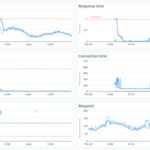The decision by the Federal Communications Commission (FCC) to quadruple the download speed required to market internet as “broadband” signifies a significant shift in the regulatory landscape of telecommunications in the United States. This change, announced in February 2022, comes as part of the FCC’s broader efforts to update its broadband standard to reflect the evolving needs of consumers and advancements in technology.
Under the previous definition established in 2015, broadband was defined as internet service offering download speeds of at least 25 megabits per second (Mbps) and upload speeds of at least 3 Mbps. This definition served as the benchmark for determining whether an area had access to broadband internet and influenced funding allocations for broadband infrastructure projects.
However, with the rapid proliferation of digital technology and the increasing demand for high-speed internet access, the FCC recognized the need to raise the broadband standard to better align with contemporary usage patterns and expectations. As a result, the new standard defines broadband as internet service with download speeds of at least 100 Mbps, marking a fourfold increase from the previous threshold.
The decision to raise the broadband standard reflects several key considerations:
-
Evolving Usage Patterns: As more consumers rely on the internet for activities such as remote work, online education, video streaming, gaming, and telemedicine, there is a growing need for faster and more reliable internet connections to support these applications.
-
Technological Advancements: Advances in broadband infrastructure, including fiber-optic networks, DOCSIS 3.1 cable systems, and 5G wireless technology, have made higher-speed internet access more feasible and accessible to a larger portion of the population.
-
Economic Competitiveness: Access to high-speed broadband is increasingly viewed as essential infrastructure for economic growth, innovation, and competitiveness in the digital age. Communities with robust broadband infrastructure are better positioned to attract businesses, create jobs, and foster entrepreneurship.
While the decision to raise the broadband standard has been widely applauded for its recognition of the importance of high-speed internet access, it has also sparked debate and criticism on several fronts:
-
Digital Divide Concerns: Critics argue that raising the broadband standard could exacerbate the existing digital divide, particularly in rural and underserved areas where broadband infrastructure is lacking or inadequate. These areas may struggle to meet the new standard, leading to disparities in internet access and connectivity.
-
Affordability Issues: Even in areas where high-speed internet is available, affordability remains a significant barrier for many households. Internet service plans offering speeds of 100 Mbps or higher are often more expensive, placing them out of reach for low-income families.
-
Implementation Challenges: Implementing the new broadband standard will require significant investment in broadband infrastructure, including the expansion of fiber-optic networks, deployment of 5G wireless technology, and upgrades to existing cable and DSL networks. Achieving universal coverage at the new standard will require coordination among government agencies, internet service providers, and other stakeholders.
So, while the decision to quadruple the download speed required to market internet as broadband represents a step forward in efforts to improve internet access and connectivity, addressing the digital divide and ensuring affordable, high-speed internet for all remains an ongoing challenge that will require continued attention and investment.











